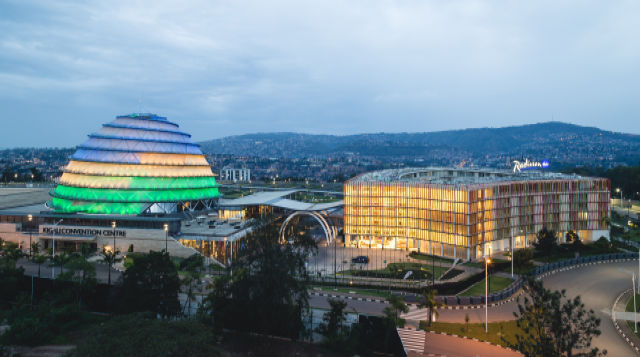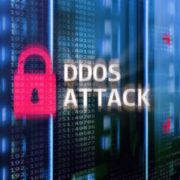While many have focused on data analysis and its security at an organisational level, it is even more imperative for the realisation of smarter and more sustainable cities capable of providing citizens with a better, safer lifestyle.
“Take consumption data of water and electricity at buildings as an example. This is often incorrect or unreliable. In many African countries both these utilities are distressed and putting measures in place to review the data and find ways to optimise usage cannot be ignored. While identifying low-hanging fruit like leaks, running taps, lights that do not get switched off or are not energy efficient might sound self-evident, it is concerning how these basics are still not followed,” says Alison Groves, Regional Director, WSP in Africa.
Things like Energy Performance Certification (EPC) are starting to force building managers to interrogate their consumption data better and use technology to optimise usage. This is where technology for resilience becomes essential as this can assist in identifying where resources are wasted.
“Of course, this is not an easy undertaking. Just consider taking data from a building with 38 water meters and the same amount of electricity meters and trying to make sense of it. Data analysis, and putting it in a format to tell a story to managers therefore becomes one of the most critically important skills to have in a digital world. Ultimately, data becomes the cornerstone of sustainability and people must have the skills to effectively analyse it,” says Groves.
RELATED Kaspersky Blocks Over 30 000 Mobile Malware Attacks In Nigeria, Kenya, South Africa In 6-Months
Furthermore, the popularisation of Internet of Things (IoT) sensors to help capture data at the source in cities is gaining momentum. This data can be used to create a safer environment. For instance, by enabling commuters to live track public transport, they do not have to stand and wait at a bus stop. They can see exactly where the bus is and plan accordingly. This increases the reliability and appeal of public transport. People can also use their smartphones to geolocate potholes through an app that can help the municipality speed up its response time to fix problems. Such reporting has already had a beneficial reaction in terms of putting more accountability in place for cities to improve service delivery.
Groves suggests that another consideration is the need to have all buildings operating to NetZero carbon standards by 2050.
“To achieve this goal NetZero buildings will require some form of self-sustaining renewable energy and localised smart grids that are managed by sensors and data. Building on this, integrated weather sensors will also help to predict availability of power and thereby enable the smart building information system for the premises to prioritise energy requirements by tuning down or switching off non-essentials – especially when there is little solar PV available, for example,” says Groves.
“But without policies in place to manage data from these integrated systems, it will be extremely challenging to realise. However, private companies are pushing towards that. And this is where smart cities can also play a role. By integrating the live, work, and play ethos in cities that are technology-enabled and focused on sustainability, there is potential to positively disrupt the market,” adds Groves.
With technology used to draw people to a city by making it operate seamlessly, policy and design become critical to make living there a sustainable exercise. Reducing the travel footprint (less commuting) and optimising the transport of goods and services, new build smart cities can circumvent the challenges found in existing cities. These smart cities can also have sensors in place to detect problems early on as opposed to the challenges of applying these to existing spaces that might not be suited for those sensors.
“Think of a green city as using less resources and a smart city as a place where everybody wants to be. Both these are converging and creating an environment that is more resilient, and thereby sustainable. This new smart city is essentially just a larger version of a smart building. Of course, the data that is generated operates on a significantly larger footprint,” continues Groves. “Additionally, key lessons learnt in new build smart cities can also be suitably adapted and applied to retrofit existing spaces in support of reduced emissions, improved efficiencies and boasting carbon neutrality.”
Security considerations to onboard in this process
But we know that wherever there is data, there is a danger of threat actors seeking to compromise or steal it. Smart buildings and cities therefore require as much a security-centric approach as they do an environmentally sustainable one.
“The functioning of buildings and cities in the future will depend on how secure IoT and other connected systems are. Just think about the safety considerations if a hacker should gain access to IoT-enabled traffic lights. Being able to change the lights can spell disaster when it comes to commuters’ lives,” says Bethwel Opil, Enterprise Sales Manager at Kaspersky in Africa.
The COVID-19 pandemic has resulted in companies, buildings, and cities embracing digital processes to improve operational systems. In particular, the infrastructure of smart cities now includes more IoT devices that link transportation networks and digital government services and businesses. This means that cyberthreats increasingly endanger the physical world and have become a serious obstacle for the digital transformation of African cities.
“Smart city cybersecurity is a significant challenge that requires comprehensive measures. Building the information security of traditional IT networks operated by city utilities and authorities, public services, educational institutions, and other urban organisations is no different from standard corporate security practice,” says Opil.
Those planning on creating smart urban systems using IoT (from smart traffic lights to systems that collect meter readings or respond to incidents on power grids) must consider the potential information security risks at the design stage and employ dedicated IoT security solutions from trusted, reputable vendors.
“Increasingly, 5G has been used to optimise the connectivity of IoT devices as it is faster and more reliable than other cellular solutions. IoT can now cover more areas, giving previously non-network devices connectivity and centralised management. This means better visibility, efficiency, and performance. But it also exposes the population to more risks as the entire system is connected. If one node is attacked, many more may be affected,” adds Opil.
5G network security will require flexibility for cities to manage multiple unknown devices with various levels of security, moving away from previous authentication models. A new, unified hybrid framework is needed to coordinate different security methods for each security layer. If devices cannot be authenticated, are misbehaving, or not adequately set, processes need to be in place to isolate them.
“If we are to embrace more sustainable, smarter, and efficient cities better suited to the connected world, data management and security must become core pillars. But understanding data to optimise utility management, improve service delivery, and to identify proactive areas to ensure growth can only be done optimally when it is protected against an evolving cyber threat landscape,” concludes Opil.































